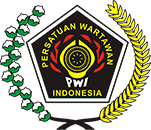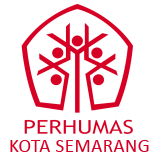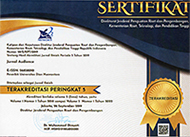Eksistensi Pameran Virtual Tugas Akhir Mahasiswa dalam Sudut Pandang Difusi-Inovasi
DOI:
https://doi.org/10.33633/ja.v4i2.4662Abstract
Abstract Implementation of education activities on 2020 for college level has changed because of Covid-19 pandemic. It must be carried by online include an exhibition for the Final Project. Dian Nuswantoro university (UDINUS) as an IT based campus has experience on online education implementation. However, this does not apply to final project exhibition activities which are usually held physically in a gallery, as it has been implemented by Visual Communication Design (DKV) majors at UDINUS for years. This transition is a new thing for DKV academic community, so it becomes the main topic of this article. The research was conducted to obtain points of view and conclusion regarding the response of the academic community to virtual exhibition and its potential on post-pandemic period. This research was carried out at the beginning of the even semester according to the UDINUS academic calendar, namely March 2021 by online. Qualitative and quantitative methods are used to gain data deeper through virtual exhibition observation, literature study, and questionnaires to the academic community randomly. The research adapted the diffusion-innovation theory of Rogers and Shoemaker’s model, which has conclusion that the adaptation of virtual exhibition for the final project of DKV students received positive response and it was accepted as a substitution of physical exhibition, as well as an alternative which can be chosen to hold exhibitions in the post-pandemic period. This research can be developed further, especially to examine the potential of virtual exhibition deeply, that have not been found in this research.Keywords: Covid-19, Visual Communication Design, diffusion-innovation; virtual exhibition, perceptionAbstrak Pelaksanaan kegiatan pendidikan tahun 2020 di tingkat perguruan tinggi mengalami perubahan signifikan akibat pandemi Covid-19. Aktivitas perkuliahan wajib dilaksanakan secara online termasuk pameran karya Tugas Akhir. Universitas Dian Nuswantoro (UDINUS) sebagai kampus berbasis IT memiliki pengalaman dalam pelaksanaan pendidikan secara daring. Namun, hal ini belum berlaku untuk kegiatan pameran Tugas Akhir yang biasanya dilaksanakan secara fisik dalam sebuah galeri, sebagaimana telah diterapkan oleh program studi Desain Komunikasi Visual (DKV) di UDINUS selama bertahun – tahun. Transisi ini merupakan hal baru bagi civitas akademika DKV, sehingga menjadi topik utama artikel ini. Penelitian dilakukan untuk memperoleh pandangan dan kesimpulan terkait respon civitas akademika terhadap pameran virtual serta bagaimana potensinya di masa pasca pandemi. Penelitian ini dilaksanakan pada awal semester genap sesuai kalender akademik UDINUS yakni bulan Maret 2021 serta dilakukan secara online. Metode kualitatif dan kuantitatif digunakan untuk menggali data secara lebih mendalam melalui observasi pameran virtual, studi pustaka, serta penyebaran angket online kepada civitas akademika secara acak. Penelitian mengadaptasi teori difusi-inovasi model Rogers dan Shoemaker, yang menghasilkan kesimpulan bahwa adaptasi pameran virtual dalam Tugas Akhir mahasiswa DKV mendapat respon positif dan diterima sebagai substitusi pameran fisik, serta menjadi alternatif yang bisa dipilih untuk menyelenggarakan pameran di masa pasca pandemi. Penelitian ini bisa dikembangkan lebih lanjut khususnya untuk mengkaji lebih dalam potensi pameran virtual yang belum ditemukan di penelitian ini.Kata Kunci: Covid-19; Desain Komunikasi Visual; difusi-inovasi; pameran virtual; persepsiDownloads
Published
2021-10-05
Issue
Section
Articles
License
Authors who publish with this journal agree to the following terms:
- Authors retain copyright and grant the journal right of first publication with the work simultaneously licensed under a Creative Commons Attribution License that allows others to share the work with an acknowledgment of the work's authorship and initial publication in this journal.
- Authors are able to enter into separate, additional contractual arrangements for the non-exclusive distribution of the journal's published version of the work (e.g., post it to an institutional repository or publish it in a book), with an acknowledgment of its initial publication in this journal.
- Authors are permitted and encouraged to post their work online (e.g., in institutional repositories or on their website) prior to and during the submission process, as it can lead to productive exchanges, as well as earlier and greater citation of published work (See The Effect of Open Access).





















